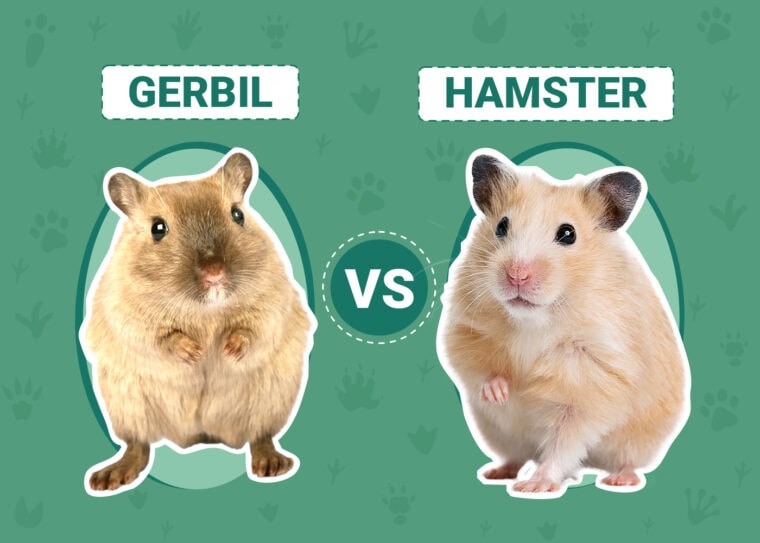
Click to Skip Ahead
You’d be forgiven for not realizing that there’s a difference between gerbils and hamsters. They’re both small rodents that look pretty similar. Caring for them is even pretty much the same. But there are some notable differences in their temperament and personalities that you’ll want to learn about if you’re trying to decide which of these pets is the best fit for your family.
Visual Differences
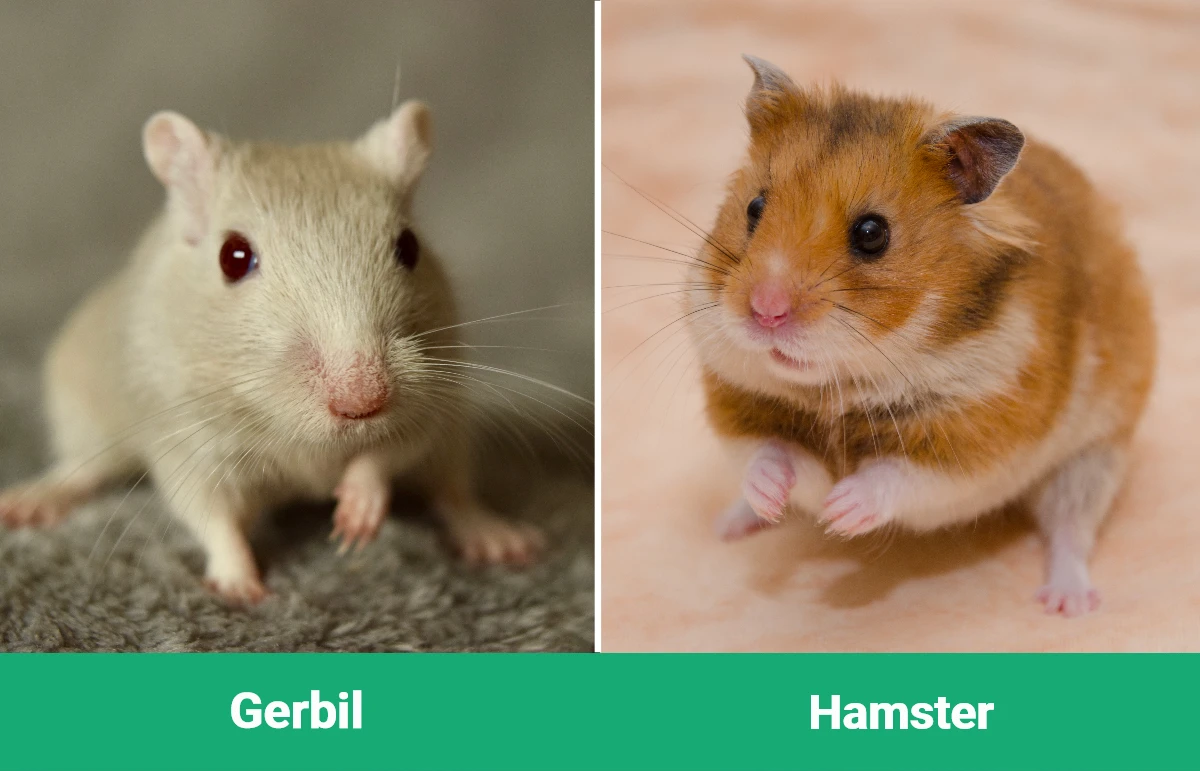
A Quick Overview
Gerbil Overview
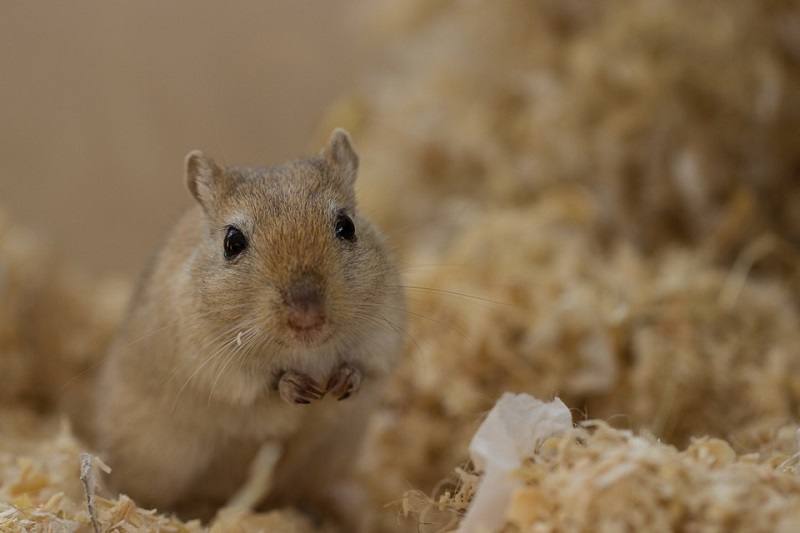
When it comes to pet gerbils, there’s one main breed. In the wild there are several, but most domesticated gerbils are Mongolian gerbils that have been bred in captivity.
These are very small pets, usually just 3-4 inches in length, with a tail that’s about the length of their body. Because of their small size, they’re not the best for very small children who can seriously injure the gerbil by being too rough or dropping it. Also, gerbils do tend to bite if they’re hurt or scared.
- Related Read: 5 Gerbil Sounds and Their Meanings (with Audio)
Personality
Gerbils go through several sleep cycles in a single day. They’re not nocturnal animals, but they’re often active at night. Unlike hamsters, mice, and other rodents, you’ll often catch your gerbil sitting upright on its back legs.
These little rodents are known for their inquisitive and curious nature. They’re always trying to explore, which can make them quite entertaining to watch.
In the wild, gerbils live in colonies. As such, they’re very social animals. They’re best-suited for homes that have more than one since they don’t like to be alone.
Training 🎾
The most important part of training a gerbil is to hand-taming. This means getting the gerbil used to being held so that they don’t get scared or bite when you reach out for them. Luckily, since they’re such social creatures, to begin with, hand-taming a gerbil can be pretty easy.
However, that’s not the only training that gerbils are capable of. These are smart little rodents, capable of learning several tricks or concepts. For instance, you can train a gerbil to use a litter box. They’ll even learn to respond to their name with a little practice. And if you get them well-adjusted to you, you can even get them to jump into your outstretched hand when you put it in their enclosure.
Care 🏥
Caring for gerbils is relatively easy. They don’t need too much space. If you have two, the fewest you should keep together, then you’ll do fine with an enclosure that’s about a foot wide and two feet long. Of course, it certainly won’t hurt to house them in a larger space.
Wire cages will suffice for housing your gerbil. However, most owners prefer a glass aquarium with a secure mesh lid. This allows you to pile up the substrate so that it’s deep enough for your gerbils to burrow into since gerbils are natural burrowers. Also, gerbils are very likely to kick a lot of the substrate out of a wire cage when they attempt to burrow, continually creating new messes for you to clean.

You’ll also need to provide your gerbils with a nest box in which they can hideout and sleep, feeling completely safe. A ceramic nest is ideal, though you can use wood. Wood will slowly get destroyed through chewing, but it’s still better than plastic, which can be destroyed pretty quickly. As an alternative, you try a clay flowerpot.
Feeding a gerbil is easy. You’ll want to use gerbil food, which you can find at any pet store. They’re often loose seed mixtures or rodent blocks.
Health 🏥
Gerbils are susceptible to illnesses such as colds, diarrhea, fleas, mites, and more. Luckily, these are all treatable, though they can shorten your gerbil’s life significantly if not taken care of quickly.
Dropping your gerbil can cause shock, which might result in convulsions. A drop from high enough can break bones or even kill your gerbil.
These little rodents are also very susceptible to heatstroke and heat stress, which can kill them. Make sure their enclosure is well ventilated to prevent this.
Finally, make sure not to pick your gerbil up by the tail. This can cause irreparable damage to your little rodent friend.
- Related Read: Do Gerbils Make Good Pets? What You Need to Know!
Hamster Overview
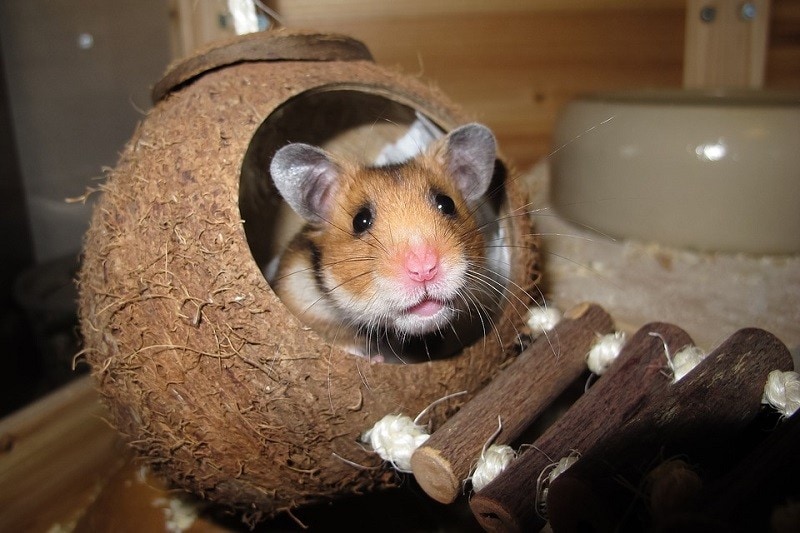
There are quite a few breeds of hamster and many of them are often found as pets. Chinese Hamsters aren’t as common as other breeds. They’re only four inches long, but they’re not Dwarf Hamsters, a more common type. Dwarf hamsters come in several varieties, including the Roborovskis and Russians, which are more commonly found in pet stores than Chinese hamsters.
However, the type of hamster most commonly kept as pets is Syrian Hamsters. They come in several colors and even go by a few different names. They’re much larger than either dwarf or Chinese hamsters.
Personality
A few breeds of hamsters are social, though most are not. Unlike gerbils, most hamsters do much better as solitary pets. They’re also very active, so when you go to pick a hamster out, you’ll want to look for one that’s either eating or running around their enclosure.
Even though hamsters aren’t social when it comes to other hamsters, they tend to pretty social with their people, showing friendly personalities and docile temperaments. They’re generally comfortable with handling and rarely ever bite.
Unlike gerbils, hamsters are nocturnal. You won’t see them being very active during the day. Most of their activity will take place in the evening hours, so you may not want to keep their enclosure near your bed.
Training 🎾
Hamsters can be trained to be comfortable with human contact. They aren’t able to trained for much else though. Even training them to be held will take a little patience and persistence.
You’ll want to give a hamster at least a week to adjust to its new home before you start handling it. Once you do, you’ll need to earn its trust. Once your hamster is relaxed, you can start attempting to handle it. You’ll know your hamster is relaxed when it’s eating, drinking, and even playing with you there.
You can get your hamster used to quicker by spending time near its cage and quietly talking to it until it’s used to your voice.
As a general rule, young hamsters are much easier to train and tame than older hamsters.
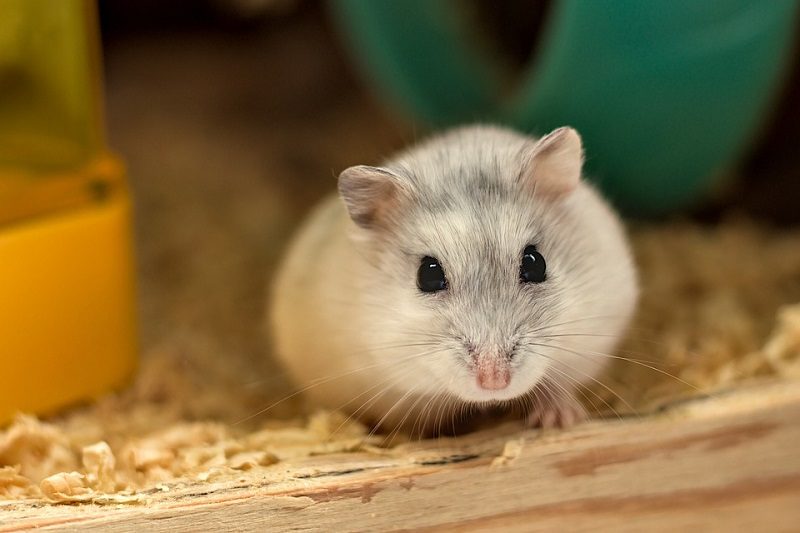
Care 🏥
Hamsters can be kept in very similar conditions to gerbils. They have similar space needs and do well in either a wire cage or a glass enclosure. Just make sure you’re providing plenty of ventilation.
Hamsters need a lot of exercise, so you’ll need to keep a hamster wheel in their cage for them to run on. You’ll also need to give them plenty of small things to chew. Expect to replace the items in your hamster’s cage pretty often as they’ll likely be destroying them on a regular basis.
Unlike gerbils, hamsters need a pretty diverse diet of fruits, vegetables, and proteins. If you just feed your hamster a pre-mixed bag of hamster food, they’ll probably just pick out the foods they like and leave the rest. This can result in them being deficient in certain nutrients, so you’ll want to supplement additional foods into their diet.
Health 🏥
Hamsters are highly susceptible to many illnesses, and they can even get a cold from you.
When you pick a hamster, you want to make sure you find the healthiest one possible. You might have to look at several stores because hamster sicknesses are extremely contagious.
To tell if a hamster is sick, watch its activity and check its eyes and rear end. If it has a wet rear end, you’ll want to avoid that hamster. Likewise, watery eyes are an indication of poor health and not a great pick. But active hamsters that are running around with vibrant eyes are the way to go.
Which Pet is the Best Fit for You?
Truthfully, both of these little rodents make excellent pets that don’t require too much in the way of care and maintenance. Once you get them set up and acclimated, you’ll just need to provide the basics; food, toys, interaction, water. So, which one is the best bet for your family?
If you want just one rodent, then you should go for a hamster. They’re solitary creatures that do better on their own. In fact, two male hamsters living together are likely to try to kill each other.
On the other hand, if you’d prefer to have two pets or even an entire colony, you’ll want to choose a gerbil since they’re very social creatures.
Want to train your rodent to do tricks? Pick a gerbil. Looking for a pet that’s a bit on the larger side, then you’ll want to go for a hamster.
Featured Image Credit: Top – Daniel Megias, Shutterstock | Bottom – Johannes Menge, Shutterstock










